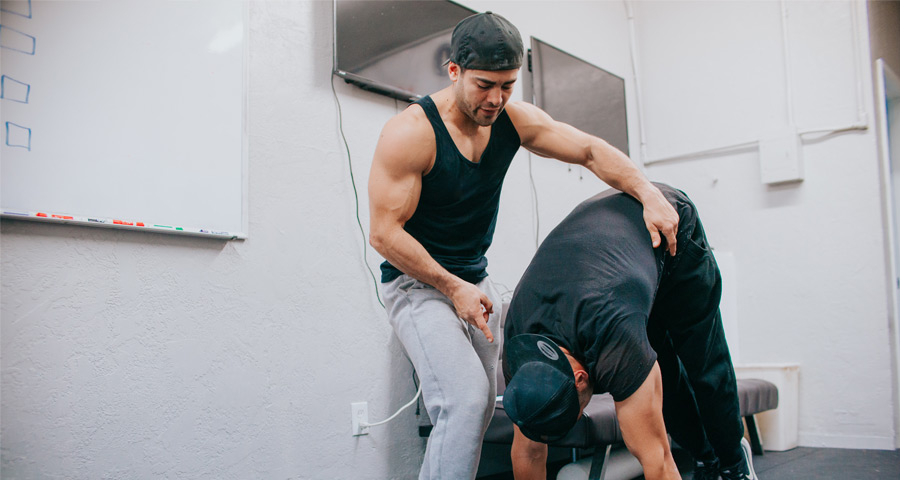In 2023, changes are expected around the world. The fitness sector will be no different. What now looks like an obstacle may provide an opportunity for growth. That’s why you should adapt your gym to the modern environment – to capture new clients and build loyalty among your existing members.
But what will change in 2023? What are the main trends going to be? We interviewed athletes and gym owners from Spain, Portugal, and France to shed light on what we can expect from the market in the coming year.
What trends will fitness companies see in 2023?
1. Personal trainers
Have you noticed the ever-growing numbers of classes with personal trainers? Based on the experiences of Albert Medrano, David Maia, and Pedro Pereira, this trend is here to stay.
“The fitness world is booming. People are increasingly requesting personal trainers. Trends are changing. Users are setting up their own home gyms and seeking personalised advice. Macro gyms are becoming a thing of the past.” – Albert Medrano, Spain
“While I’m aware I stand to benefit, personal trainers will play an increasingly important role, as they provide safer training conditions, particularly for older clients. It’s more personalised, and more motivating.”
David Maia, Portugal
“Tailored training with personal trainers is increasingly seen as a positive. Since the pandemic, it’s no longer viewed as a ‘luxury’, instead becoming more of a need.”
Pedro Pereira, Portugal
“Coaching studios are booming. I opened my own studio three years ago, and we’re expanding. I get loads of requests from trainers looking to open a studio, and others in the process of doing so or just setting out. We can help because we have the expertise to provide support you won’t find at gyms. I’ve had lots of clients who went to other gyms but stopped after a while. They prefer to pay more to have someone train with them, motivate them, offer advice and prevent injuries.
David Gouze (GD Coaching Studio), France
“More boutique gyms (easier to control fixed costs and manage service quality, due to a closer relationship with customers). It’s also easier to control service quality when on a human level.”
Florent Nuttin (Battling Club Bordeaux), France
2. Training support technology
“Like in 2022, incorporating technology in training will be a trend. Clients increasingly like to see measurable results quickly. The use of smart watches and even biometric bands will continue to be a ‘must’ for many customers to keep track of calories burned or even monitor their recovery between workouts.”
Pedro Pereira, Portugal
“Everything related to the connection between man and machine is trending. Things that tell us the number of steps, cardio, sleep, etc. We’ll be able to include what we eat and drink, and it’ll be able to calculate our health condition, body shape, etc. We’re going to look at mobility, persistence and increase our training hours. We’re going to measure things, count how much we run or cycle, or where we run. Customers will seek out these data.”
David Gouze (GD Coaching Studio), France
3. More flexibility and variety
“I can’t predict the future, but I can share what I’ve witnessed in Europe and the post-pandemic changes. I think gyms will have to show greater flexibility – clients increasingly have flexible work schedules, at home and in the office. The 2019 work schedule no longer exists 100%. This will be a key issue for fitness companies.”
Pedro Pereira, Portugal
To validate a new class or schedule, ask customers if they’re interested in taking part, or if they have other suggestions that would work better for them.
David Gouze also believes that customers want greater variety and flexibility, both in terms of training spaces and the equipment used.
“Gym goers visit different places for their activities. This is a trend I see with my clients. People come to my studio for personal training, but then visit low-cost gyms because there they can also use a wide range of top-end equipment for cardio. Then outdoor activities and exercise at home as well.”
David Gouze (GD Coaching Studio), France
4. Short, high-intensity classes
“Adding high-intensity resistance training. Previously HIIT was an extremely appealing format given its short, high-intensity structure. Now, I believe the upgrade is increasingly adding high-intensity strength training – CrossFit style.”
Pedro Pereira, Portugal
Clients will continue to look for different training formats. Pay close attention, to always be one step ahead and keep them happy.
5. Sports in companies
“The potential of corporate fitness has not yet been tapped into. Companies that hire trainers or set up spaces for their employees. I used to be a professional fitness coach at a club and worked for a company where I put on training sessions for employees, but also one-on-one classes for executives. This is extremely important for employee well-being. We’ve also seen major improvements in terms of warm-ups at large construction sites. For instance, we’ll help workers to warm up to avoid work stoppages, and to show society cares about them.”
David Gouze (GD Coaching Studio), France
6. Healthier ageing
“Some clients are looking to age healthily, and aim to go walking, hiking and travelling. The health factor is important, and often gets overlooked in this world of low-cost gyms. People want to age better. They want to take care of their health, so they are willing to pay more, and we’re also going to offer more and charge a higher fee. They want to be understood, be mobile, be more flexible and stronger. This sector offers potential for individual or personal trainers.”
David Gouze (GD Coaching Studio), France
What plans are in place to adapt to these new trends?
At Off Limits CrossFit, Pedro Pereira is taking a more family-oriented and customer-friendly approach and keeping the higher hygienic standards that the pandemic introduced.
“It’s clear that after the pandemic, people are keen for gyms to be cleaner and more hygienic. Customer communication channels must be open and diversified, along with the target populations where we can effectively work towards improving their quality of life. Therefore, “Family” is our focus this year. Our Kids classes have restarted, and we’ve recently added a class for people aged 60 and over. Our goal is for regular customers to train, but we want Off Limits to be seen as their home away from home. We want clients to bring their fathers, mothers, sons and daughters, to share their fitness journeys, the quest for a healthier life and all the happiness that this brings.”
Fitness coach Víctor González (Entrena Tu Salud Elda) aims to focus his strategy on a less commercial approach, and work more closely with customers.
“I believe there’s an issue with understanding the world of training for health and performance as somewhat skewed. It’s a field that improves people’s health and performance. I think marketing strategies should focus on people less commercially.”
In France, Gouze admits that he needs to invest in brand digitalisation, especially via social media.
“Since I’m from a different era, and don’t have all the necessary knowledge, I try to keep up. I’ve created a social media presence, but then I need help and people to handle it, to digitise my activities and tap into this potential. I have lots of followers, people who want to continue, but there’s only one me. The way to expand is by creating courses, and creating platforms where people subscribe cheaply. Then I can reach a lot of people who can choose when they train. This creates a nice income stream for my business.”
A key factor in growing your fitness business will be not only adapting to the trends expected in 2023, but also standing out. Those who excel in the market will have a better chance of keeping clients and attracting new ones. Customers are increasingly seeking out new concepts and different training approaches.
Start by looking inward, to draw conclusions about how your gym users behave. You could even put a questionnaire together to get more specific data about what they expect from their fitness space in 2023. Many opportunities clearly still remain to boost your business.

